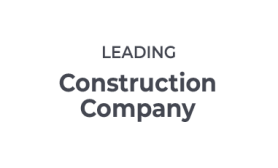Case Study
Data Recovery from Physically Failed Netgear® ReadyNAS RAID 5 Server
Normal business operations and productivity affected while business-critical data was at risk.
Published On :
The client is an India-based leading engineering company that delivers end-to-end solutions for high precision mechanical requirements of aerospace, high-frequency and microwave electronics, medical and telecommunication industries.
The organization was using a Netgear® ReadyNAS RN51600 server comprising 5 Serial Attached SCSI (SAS) Hard Disk Drives (HDDs) each with 4 TB capacity. Configured to RAID 5, the 16-TB Linux-based volume with b-tree file
system (BTRFS) hosted application data, Office files, documents, emails, and other data.
The NAS was used for storing and sharing the network files among the employees at its various branch offices.
While attempting to access the RAID volume in an instance, the organization received an error message, ‘Hard drive damaged – critical error’ - indicating the failure of a RAID hard drive.
The NAS administrator tried rebuilding the failed RAID by formatting the hard drives and replacing the physically crashed HDD with a new one. However, he received a volume corruption error during the RAID rebuilding process,
resulting in complete RAID failure. The RAID 5 rebuilding process was attempted without backing up the HDDs, so the data was at stake.
RAID failure hampered the users’ access to business-critical data stored on the NAS. The outage impacted business operations and productivity while posing a risk of data loss. So the organization reached out to Stellar® for RAID data recovery.
Recover data from failed NAS configured to RAID 5 volume comprising physically crashed and formatted HDDs.
Stellar® data recovery experts and the R&D team performed an in-depth diagnosis of the failed NAS. They employed the following steps to recover data from the failed RAID 5 volume:
Step 1: Lab Examination of Hard Disks
Step 2: Hard Drive Head Assembly Replacement
Step 3: Hard Disk Cloning
Step 4: Virtual RAID Construction
Step 5: Deep Scan of NAS Drive Image
Step 6: Data Recovery via NAS Snapshots
Stellar® team recovered 100% data from Netgear® NAS RAID 5 Recovery.
The team successfully completed the RAID 5 damaged and formatted drives data recovery project within the specified time. The service helped the client to reinstate its normal business operations.
The data was recovered with 100% integrity while maintaining strict adherence to ISO 27001 standards, ensuring the confidentiality, security, and privacy of the client’s data.
We perform data recovery from all type of servers with any RAID confingration. Read more about RAID Data Recoery Services.

Healthcare Services Provider

Leading Media Production House

Corporate User

Corporate User